Ergamenes › Eridu › Hoysala Architecture » Origins and History
Articles and Definitions › Contents
- Ergamenes › Who Was
- Eridu › Ancient History
- Hoysala Architecture › Antique Origins
Ancient civilizations › Historical places, and their characters
Ergamenes › Who Was
Definition and Origins
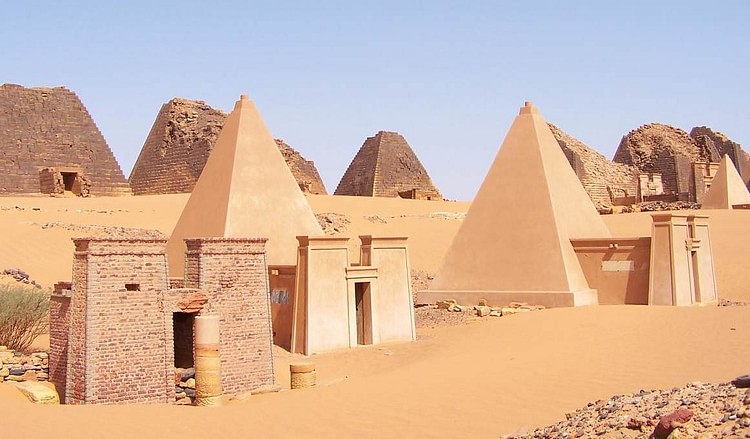
King Ergamenes (also known as King Arkamani I, r. 295-275 BCE) was the greatest king of the city of Meroe, Kingdom of Kush (located in modern-day Sudan) who broke free from Egyptian dominance to help direct a wholly distinct culture. The city of Meroe is cited by many ancient writers ( Herodotus among them) as an almost fabled city of wealth and mystery, and scholars credit Ergamenes for establishing the culture which fostered such prosperity and lay the groundwork for later Meroitic kings and queens to build upon.
His relationship with the Pharaoh Ptolemy II Philadelphus (r. 285-246 BCE) is the earliest documented case of political cooperation between Meroe and the Ptolemaic Dynasty of Egypt. According to the historian Robert Steven Bianchi, Ergamenes was closely tied to the Egyptian throne and "possessed a titulary composed of five royal names on the model of traditional ancient Egyptian pharaohs" including his throne name Khnum-Ib-Re. He is most famous as the ruler who broke with the long-standing tradition of religious authority superceding the secular authority of the king.
ERGAMENES AND THE PRIESTS OF AMUN
According to the historian Diodorus Siculus (1st century BCE), in the time before the reign of King Ergamenes it had been the custom for the high priests of the god Amun to decide who became king and to set the duration of the king's reign. As the health of the king was tied to the fertility of the land, the priests had the power to determine if the sitting king was no longer fit to rule. If they deemed him unfit, they would send a message to the king, understood to be from the god Amun himself, advising him that the time of his rule on earth was completed and that he must die.
This tradition had been instituted at the city of Napata, which had been the capital of the Kingdom of Kush until it was destroyed c. 590 BCE by the Egyptian pharaoh Psammeticus II (595-589 BCE). Napata's culture had been significantly influenced by that of Egypt and the priests of Amun in the city had acquired the same level of power and influence as the ancient priests of the god in Egypt. In the same way that Amun in Egypt was thought to be able to speak directly to his priests, so was it believed he did in Kush. The kings of Kush, therefore, had always obeyed the divine orders and had taken their own lives for the supposed good of the people. However, Diodorus continues:
[Ergamenes], who had received instruction in Greek philosophy, was the first to disdain this command. With the determination worthy of a king he came with an armed force to the forbidden place where the golden templeof the Aithiopians was situated and slaughtered all the priests, abolished this tradition, and instituted practices at his own discretion.
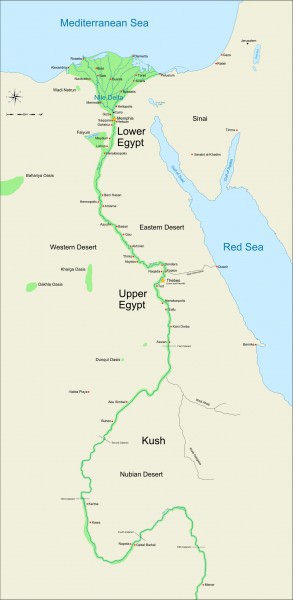
Ancient Egypt
The archaeologist George A. Reisner (1867-1942 CE), who excavated the sites of Napata and Meroe, called into question Diodorus' story about the priestly control of kingship calling it "very dubious" and claiming Diodorus' account was most likely a legend which, by the time he wrote, had come to be accepted as historical truth.
The scholar Derek A. Welsby, however, notes, "The veracity of Diodorus' statement has been doubted, but there is no other evidence to bear on this question one way or the other" (32). What is known is that, after the reign of Ergamenes, Egyptian influence in the region of Nubia declines, the Kingdom of Meroe rises, and Meroitic script replaces that of the Egyptians.
Whether Ergamenes did, in fact, slaughter the priests and free the people from Egyptian influence in precisely the way described by Diodorus is, then, almost irrelevant. Clearly something of great significance occurred which had something to do with Ergamenes and the priests of Amun which resulted in the abrupt decline of Egyptian influence. The Nubia Museum states, "When the kings ceased writing in Egyptian, and began writing in their own Meroitic language, we suddenly cease being able to understand their official inscriptions," and this seems to have happened rather abruptly, arguing for the truth of Diodorus' version of history.
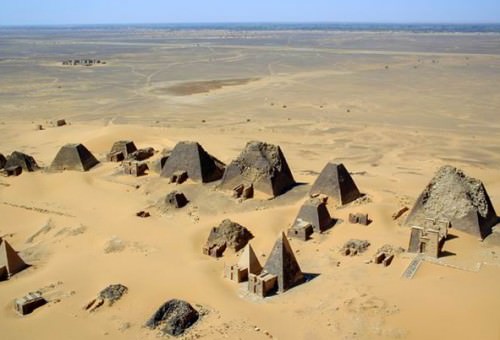
The Pyramids of Meroe
Reisner also claims that Ergamenes was a contemporary of Ptolemy IV Philopator (r. 221-205 BCE) instead of Ptolemy II Philadelphus and that he was instrumental in the building of the Dakka Temple in southern Egypt. Relations between the Kushites and Egypt were strained during the reign of Ptolemy IV, however, and cooperation between the two countries in a building project seems unlikely. More importantly, however, the dates simply do not match as Ergamenes was no longer king of Meroe in 221 BCE and, further, under Ptolemy IV's reign, the Kingdom of Kush supported a revolt in Upper Egypt and so to claim there were collaborations on building projects between Egypt and Kush at this time is untenable.
If Reisner can be mistaken about which Egyptian pharaoh Ergamenes dealt with, his claim regarding the account of Diodorus may also be wrong. It seems clear that Ergamenes and Ptolemy II established a mutually respectful relationship between the two countries after Ergamenes had asserted his authority over the priests of Amun. Egyptian monarchs and the Amun cult had a long history of mutual distrust and friction by this date, after all, and Ergamenes' refusal to play by their rules would have sat well with an Egyptian king.
ERGAMENES' REFORMS
Having freed Meroe of Egyptian custom, Ergamenes then set about passing a series of laws which would make the Meroitic culture even more distinct from the Egyptian (c. 285 BCE). He instituted burial practices at the city of Meroe itself instead of observing the tradition of interment of the dead at Napata following Egyptian tradition. Although all of the tombs found at Meroe (including Ergamenes') have been plundered, the evidence which has been uncovered points to practices similar to the Egyptian but significantly different.
Two examples of these differences are the depictions of Meroitic kings in Egyptian poses but with Kushite elements such as dress, facial features, and weaponry, and the style of coffins used in burials. Similarities would include the rituals surrounding the burial of the dead (placement of personal objects in the grave or tomb ) and the fashioning of the tomb as a home for the deceased.
Egyptian architectural designs were kept but modified to reflect the culture of Kush and the same was true for statuary and other art work. The cult of Amun continued at Meroe and, in fact, the Temple of Amun in the center of the city was considered a masterwork; but the priests no longer had power over the kings.
The kingship itself changed following Ergamenes' reign with the institution of queens who ruled without male support or dominance. Prior to Ergamenes, kings had wives who may or may not have exerted influence over the court; afterwards, however - from c. 284 BCE on - their influence became significant. A number of these queens, known as Candaces (or Kentake) ruled with complete autonomy and some are depicted leading their armies into battle. Between c. 170 BCE-c. 314 CE these queens are attested to as formidable monarchs who enlarged their territory, orchestrated profitable trade agreements, defied the will of Rome, and negotiated favorable terms for their people.
Egyptian language and script also disappear in Meroe after the reign of Ergamenes to be replaced by Meroitic art and the highly distinctive Meroitic script of twenty-three symbols, including vowels. As no one has yet deciphered the script, whatever else may be known of the great King Ergamenes remains hidden and as mysterious as the city of Meroe itself would become to later writers.
CONCLUSION
Ergamenes' reforms strengthened the national identity of Meroe and the Kingdom of Kush by encouraging indigenous art work, architecture, script, and politics and abandoning the long-standing tradition of modeling such cultural aspects on Egyptian paradigms. Ergamenes seems to have further improved the lives of his people by encouraging industry and agriculture in the region and amassing considerable wealth through trade.
Unfortunately, neither the king nor the people of Meroe recognized the dangers of depleting one's resources without thought for the future. The great forests and fertile fields were cut down and used up by the iron works of the city, which needed to burn wood to create charcoal for the process, and by overuse of the land for agriculture which depleted the nutrients in the soil.Meroe would most probably have had to be abandoned but was destroyed before that could happen.
The city was sacked in c. 330 CE by the Axumites and was deserted by c. 350 CE. In the present day, there are no forests and no fields and the ruins of Meroe rise from the arid sands of the Sudan. In its time, though, it was a city of wonder remarked on in a number of ancient works and the memory of Ergamenes lives on through those ancient historians who found him as impressive as the city itself.
Eridu › Ancient History
Definition and Origins
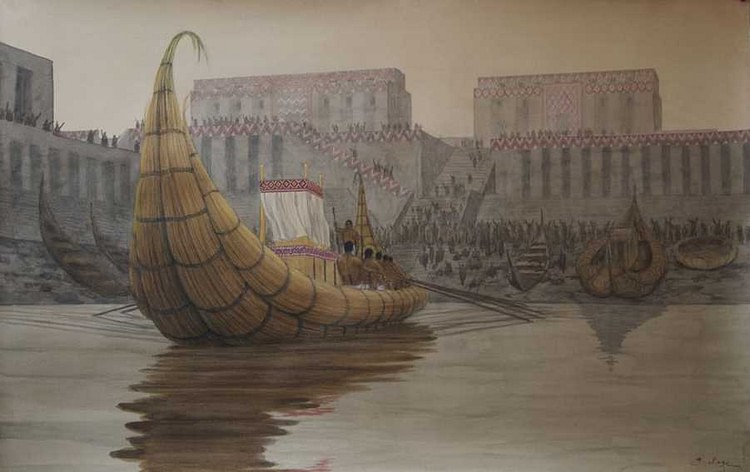
Eridu (present day Abu Shahrein, Iraq) was considered the first city in the world by the ancient Sumerians and, certainly, is among the most ancient of ruins. Founded in circa 5400 BCE, Eridu was thought to have been created by the gods and was home to the great god Enki (also known as Ea) who would develop from a local god of fresh water into the god of wisdom and magic (among other attributes) and stand with other deities such as Anu, Enlil, and Inanna as the most important in the Mesopotamian Pantheon. The Sumerian King List cites Eridu as the “city of the first kings”, stating, “After the kingship descended from heaven, the kingship was in Eridu” and the city was looked back upon by the variouis tribes and city-states of Mesopotamia as a metropolis of a 'golden age' in the same way the writers of the biblical narratives created a ' Garden of Eden ' (most probably on the model of Eridu) as their mythical paradise from which humanity fell.
THE CITY OF ERIDU FEATURES PROMINENTLY IN SUMERIAN MYTHOLOGY, NOT ONLY AS THE FIRST CITY BUT ALSO AS THE HOME OF THE GODS.
The city of Eridu features prominently in Sumerian mythology, not only as the first city and home of the gods, but as the locale to which the goddess Innana traveled in order to receive the gifts of civilization which she then bestowed upon humanity from her home city of Uruk (considered by modern scholars to be the first city in the world). The Eridu Genesis (composed c. 2300 BCE) is the earliest description of the Great Flood, pre-dating the biblical book of Genesis, and is the tale of the good man Utnapishtim (also known as Atrahasis or Ziusudra) who builds a great boat by the will of the gods and gathers inside 'the seed of life'. The Eridu Genesis may have been the first written record of a long oral tradition of a time around 2800 BCE when the Euphrates rose high above her banks and flooded the region. Excavations at Ur by Leonard Wooley in 1922 CE revealed an eight-foot layer of silt and clay, consistent with the sediment of the Euphrates, which seemed to support the claim of a catastrophic flood in the area around 2800 BCE. Notes of the excavation taken by Wooley's assistant, Max Mallowan, however, showed the event was clearly a local, not a global, event.
A proto-Genesis tale of the Garden has been found at Eridu in which Tagtug the Weaver (or gardener) is cursed by Enki for eating of the fruit of the forbidden tree in the garden after being told not to. Eridu is further associated with the tale of the great sage Adapa (son of Enki), who was initiated into the meaning of life and all understanding by the god of wisdom but was ultimately tricked by him and denied the one thing he most wanted: knowledge of life without death, to live forever. The desire for immortality features prominently in Mesopotamian literature, and Sumerian writings specifically, and is epitomized in the story of Gilgamesh of Uruk. Uruk's link to Eridu is significant in that Eridu's initial importance was later eclipsed by the rise of the first city of Uruk. This transferrence of power and prestige has been seen by some scholars (the historians Samuel Noah Kramer and Paul Kriwaczek among them) as the beginnings of urbanization in Mesopotamia and a significant shift from the rural model of agrarian life to an urban-centered model. The story of Inanna and the God of Wisdom, in which the goddess of Uruk takes away the sacred meh (gifts of civilization) from Enki, the god of Eridu, can be seen as an ancient story symbolizing this shift in the paradigm of Sumerian culture.
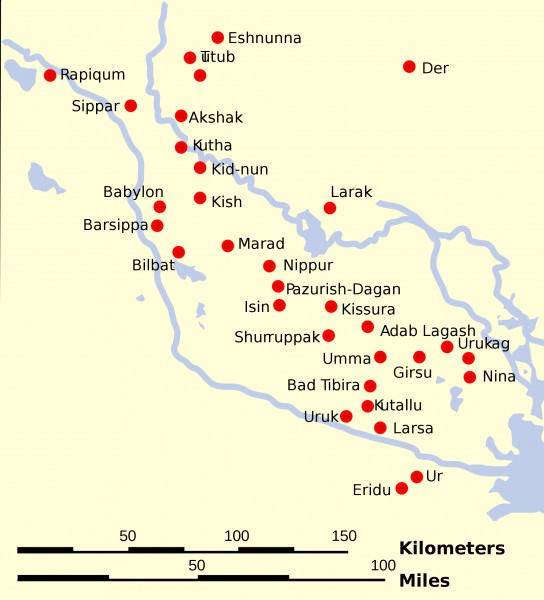
Map of Sumer and Elam
MAP
Hoysala Architecture › Antique Origins
Ancient Civilizations
The Hoysala era (1026 CE – 1343 CE) was marked by illustrious achievements in art, architecture, and culture. The nucleus of this activity lay in the present day Hassan district of Karnataka, India. The most remarkable accomplishment of this era lies, undoubtedly, in the field of architecture. The intention of surpassing the Western Chalukyan Empire (973 CE – 1189 CE) in its own sphere provided further impetus for excelling in the field of architecture.
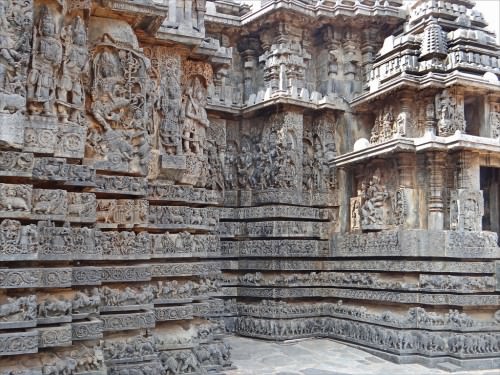
Hoysaleswara Temple in Halebidu
HISTORY OF THE HOYSALA EMPIRE
The Hoysala rulers began as local chieftains in the hills of Western Ghats. With time, their fortune began to prosper and within a few decades they achieved the status of a powerful feudatory under Western Chalukyan Emperors. Early in the history of Hoysala dynasty, the capital of their nascent dominion was shifted from the hills of Western Ghats to Belur. The military conquests of Vishnuvardhan (1108 CE – 1152 CE) against the neighbouring Chola Empire (c. 300 BCE – 1279 CE) in 1116 CE marks the first major development in the history of these dynasts. A new age now ushered with Vishnuvardhan as he built the Chennakesava temple (1117 CE) in Belur to celebrate this victory; furthermore, he decided to shift the capital almost 20 km to the east to Halebidu or Halebid.
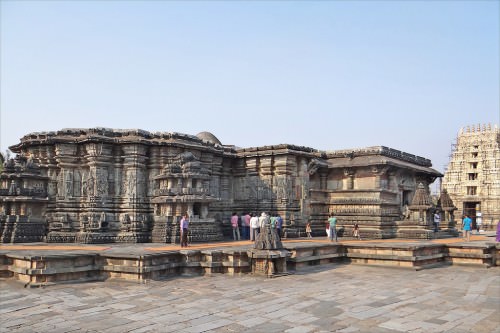
Chennakesava Temple in Belur
The Hoysalas gained their political freedom in 1192 during the reign of Veera Ballala II (1173 CE – 1220 CE). They soon became a leading power in Southern India and enjoyed territorial supremacy and economic well-being over the next century or so. At its height, the empire consisted of present day Karnataka, parts of Tamil Nadu and south-western Telangana. However, invasions of sultanates from Delhi and Madurai, from 1311 CE onwards, proved fatal to the then reigning monarch, Veera Ballala III (1292 CE – 1343 CE). He eventually succumbed to these repeated onslaughts in 1343 CE.
NATURE & INFLUENCE
THE HOYSALA RULERS WERE INFLUENCED BY THE WESTERN CHALUKYAN ARCHITECTURE & EMPLOYED THEIR CRAFTSMEN AS WELL.
The Nolamaba (late 8th – 11th century) and Western Ganga (350 CE – 1000 CE) dynasties – predecessors of Hoysalas in Southern Karnataka – constructed both Hindu and Jain temples inspired by Tamil heritage. In contrast, the Hoysala rulers were influenced by the Western Chalukyan architecture and employed their craftsmen as well.
An abundance of figure sculpture covers almost all the Hoysala temples. Soapstone, which allows fine detailing and clarity, also helped in this predilection. This is a return to a more extensive iconographic representation of episodes from popular epics compared to later Western Chalukyan architecture. It must be remembered, however, that in temple architecture these do not merely serve a decorative purpose, but are essential to the integrity and composition of the structure.
BRIEF INTRODUCTION TO TEMPLE ARCHITECTURE
A cuboid cell, the garbha griha (sanctum sanctorum) houses a centrally placed murti (enshrined icon) on a pitha (pedestal).The shikhara (superstructure), rises over the garbha griha and together with the sanctum they form the vimana (or mulaprasada ) of a temple. A ribbed stone, amalaka, is placed atop the shikhara with a kalash at its finial. An intermediate antarala (vestibule) joins the garbha griha to an expansive pillared mandapa (porch) in front, chiefly facing east (or north). The temple may be approached via entrances with gigantic gopurams (ornate entrance towers) towering over each doorway. In the prakaram (temple courtyard) several minor shrines and outbuildings often abound.
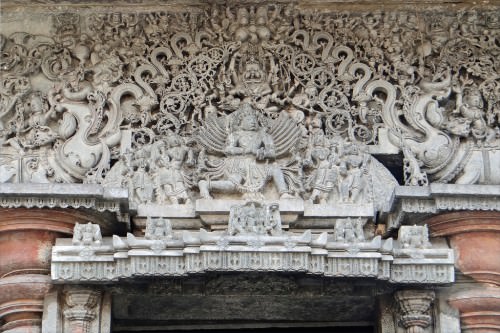
Garuda in Chennakesava Temple, Belur
The vimanas are either stellate, semi–stellate or orthogonal in plan. The intricately carved banded plinths, a distinguishing characteristic of the Hoysala temples, comprise a series of horizontal courses that run as rectangular strips with narrow recesses between them. Also, the temples themselves are sometimes built on a raised platform or jagati which is used for the purpose of a pradakshinapatha (circumambulation).
To study in detail the architecture of the period, we will consider examples from Belur and Halebidu which together contain some of the finest surviving temples from that era.
BELUR
Chennakesava Temple Complex
This is an ekakuta, ie, a temple with one shrine. Regrettably, the shikhara has been lost to the ravages of time. The garbha griha houses an enshrined image of Krishna (Chenna means beautiful whereas Kesava is another name of Krishna). The whole temple, built on a grand scale, follows the general pattern of Hoysala architecture. It has an east–west orientation set on a jagati. The hall has 60 bays and a shrine measuring 10 m on either side. Under the eave cornice of mandapa (outdoor ritual hall) there are 38 most wonderfully sculpted figures called salabhanjika or madanika (bracket figures). Their placements and inscriptions reveal these to be later additions (primarily during the reign of Veer Ballala II).
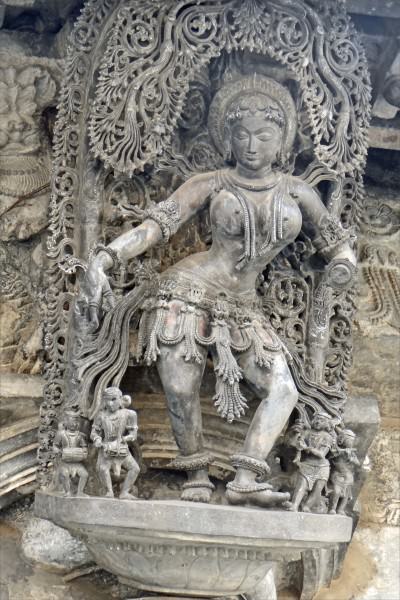
Shalabhanjika Sculpture in Belur
To the southern end of this main temple lies Kappechennigaraya, consecrated by the queen of Vishnuvardhan, Shantala, the same year. Beside the main shrine there is a subshrine housing the image of Venugopal. This temple follows the stellate plan but is less ornamental.
The same compound houses another temple named Viranarayan to the west of Chennakesava. It is an ekakuta, Vaishnava temple, probably erected at a later date of the 12th century CE. It is built following the basic pattern of a garbha griha and an antarala opening up to the mandapa, all built on jagati. Interestingly, this temple is relatively austere, lacking in the narrative friezes that are abound in Chennakesava temple.
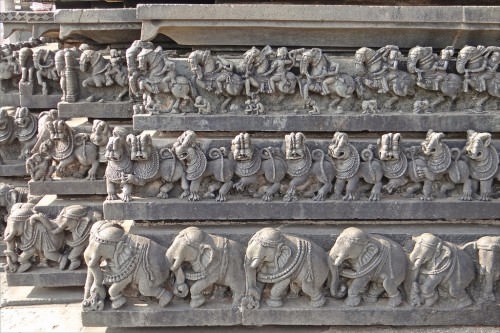
Chennakesava Temple in Belur
A relatively minor structure, the Saumyanayaka temple is situated to the southwest of the main temple. Its damaged shikharawas repaired in 1387 CE by a minister under the Vijaynagar King Harihara II.
A stepped pond called Vasudev Tirtha was constructed to the northwest of Chennakesava by Veer Ballala II. It is a consistent feature of any temple in which devotees perform an ablation before entering the mandapa.
Many such additions and modifications, both minor and significant, have been carried out well into the reign of later day monarchs of this region.
HALEBIDU
Originally Halebidu was called Dwarasamudra which refers to a large water reservoir that was excavated almost three-quarters of a century before the city being selected as the capital of the Hoysala Empire. Its present name means 'old city', doubtlessly indicating to the fact of its abandonment after being ransacked twice by the invading armies of the sultanates.
Hoysaleshwara & Shantaleshwara
In this dvikuta (temple with two shrines) Shaiva temple, the two garbha grihas (sanctum sanctorum) are found connected by a mandapa (porch) forming a large open hall. One shrine is dedicated to King Vishnuvardhan and the other to his Queen Shantala, therefore it is called Shantaleshwara. Built in 1121 CE, it was principally constructed under the patronage of wealthy local merchants and aristocrats. There are four entrances to the twin temple with miniature vimanas flanking them on either side. Two adjunct shrines, one for Nandi (bull) and another for Surya (sun) are also built on the same jagati. The exquisite friezes on temple walls eloquently render stories from Ramayana, Mahabharata and Bhagavata Purana. These reliefs preserve one of the finest achievements of Hoysala craftsmen and constitute an exhaustive lesson in the symbology of Hindu art.
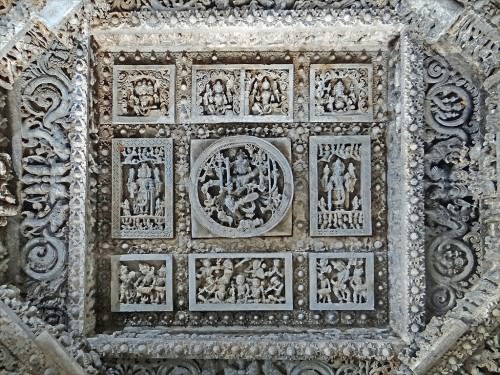
Ceiling Decoration in Hoysaleswara Temple, Halebidu
Kedareshwara
This Shaiva trikuta (temple with three shrines) temple is located only a couple of kilometers to the south of Hoysaleshwara. It was built under the patronage of King Veer Ballala II and Queen Ketala Devi. Designed following a stellate plan, the central shrine is connected to the other two laterally positioned shrines by a common mandapa. The sculptural details illustrate beautifully executed Bhairava, Vishnu as Bharadwaj and Kaliyadamana among others.
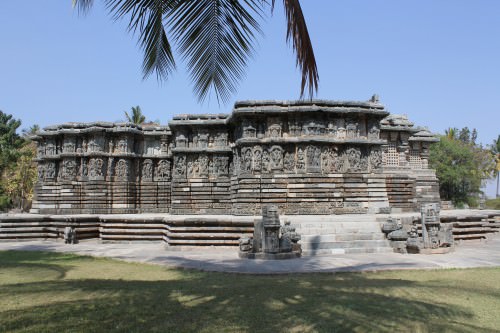
Kedareshwara Temple in Halebidu
Kalyani Tank, Hulikere
In the suburb of Halebidu, present day Hulikere, this splendidly decorated tank was built for a Shaiva temple during the reign of emperor Narasimha I (1152 CE – 1173 CE). Ironically, no trace of the temple could be found today, but this tank still survives.This stepped pond is adorned with 27 miniature shrines, some even carrying a superstructure atop.
Jain Temples in Bastihalli
Further south from Kedareshwara, in the village of Bastihalli, lies a group of three Jain temples. These temples are dedicated to Jain tirthankars (teaching gods) Adinath, Parsvanath and Shantinatha. Each temple enshrines an image of the respective tirthankar in their garbha griha. Parsvanath Basti was built in 1133 CE by King Vishnuvardhan to celebrate the birth of his son, Narasimha I. Aligned along the north-south axis, all of these structures faithfully follow the general architectural pattern of the Hoysalas.
Of these, the Adinath Basti, built in the late 12th century CE, is the smallest in size. It carries a beautifully decorated image of Saraswati inside its vestibule. This place seems to have for long been a sacred spot for Jains as archaeological remains dating back to the mid-10th century CE are found.
The twin cities of Belur and Halebidu were once the crown jewels of Hoysala Empire. Today they attract a most well-deserved attention from tourists, scholars, and devotees alike from different parts of the country and world at large. Daily worships continue in most of the shrines even today. Despite the irreparable losses suffered at the hands of time and mercenary human forces, the grandeur of these structures and piety that went into their construction continue to inspire reverence from the silent beholder to this day.
LICENSE:
Article based on information obtained from these sources:with permission from the Website Ancient History Encyclopedia
Content is available under License Creative Commons: Attribution-NonCommercial-ShareAlike 3.0 Unported. CC-BY-NC-SA License